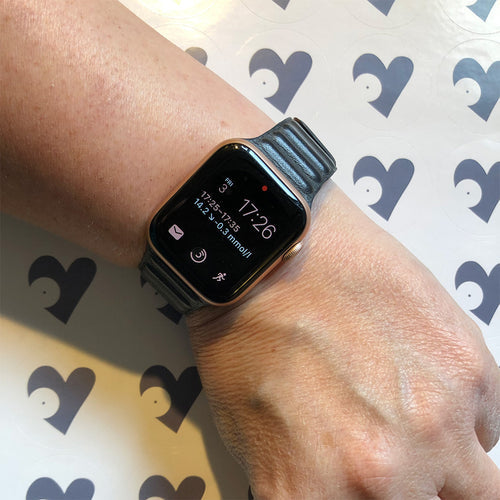
Back in the 1950s, a British doctor called Philip Hugh‑Jones was running a diabetes clinic near Kingston, Jamaica. Most of the patients who came through his doors fitted neatly into one of two categories: what we now call Type 1 or Type 2 diabetes. But then came a group of 13 patients who defied both categories.
They were young, thin, and often undernourished. At first glance, you’d think Type 1. But here’s the twist: they never developed ketones or went into ketoacidosis that usually comes with untreated Type 1. And they didn’t look like typical Type 2 patients either, who are often heavier. Hugh‑Jones concluded that these patients had a different type of diabetes. He named it 'Type J' — J for Jamaica.

Fast‑forward 70 years and that mystery group of patients finally has a proper name: Type 5 diabetes.
In 2025, the International Diabetes Federation (IDF) officially adopted the term and even set up a working group to study it. Some researchers think as many as 20–25 million people, primarily in Asia and Africa, could have this under‑recognised condition.
Type 5 has also been referred to as Malnutrition-related diabetes mellitus (MRDM) and some professionals and commentators have assumed it’s a version of MODY (Maturity onset diabetes of the young). However, recognition by the IDF makes it clear that Type 5 is a distinct condition.
What makes Type 5 different?
Think of it as the awkward middle ground between Type 1 and Type 2. Like Type 1, people with Type 5 don’t make enough insulin. But unlike Type 1, they do make some, and crucially, they don’t tip into ketoacidosis. And while Type 2 is mostly about insulin resistance, Type 5 isn’t — the body’s cells can respond to insulin, there’s just not enough of it to go around.
Why? Researchers say the answer lies in malnutrition. From development inside the womb through childhood and into adult life, many people with Type 5 have lived through long‑term food shortages. That stunted growth seems to permanently affect the pancreas, leaving it too weak to produce enough insulin.
Historical studies with rodents have shown that a low-protein diet during pregnancy or adolescence leads to poor pancreas development and a smaller pancreas. This increases the risk of diabetes as there are fewer reserves of insulin-producing cells.
Type 5 usually occurs before the age of 30 years and many classic symptoms of diabetes overlap with undernutrition signs, making it difficult to spot. Unlike type 1s who often have ketones in their urine when diagnosed, those with type 5 do not.
How Type 5 compares
|
Feature |
Type 1 |
Type 2 |
Proposed Type 5 (MRDM) |
|
Classical presentation |
Young, lean, insulin deficiency, autoimmunity, ketoacidosis risk |
Usually older, overweight/obese, insulin resistance |
Young or early adulthood, low BMI, minimal insulin secretion deficits, non‑autoimmune |
|
Ketoacidosis risk |
High without insulin |
Rare |
Very low — typically do not develop ketoacidosis despite high blood sugar |
|
Insulin production |
Essentially zero (autoimmune destruction) |
Often high or normal (initially) |
Low but not zero — pancreas is impaired from early development |
|
Insulin resistance |
Not a major factor |
Central in disease |
Minimal or absent — the core problem is low insulin output, not resistance |
|
Nutritional history |
Not typically factor |
Can be risk factor indirectly |
Often chronic undernutrition from fetal life, infancy, childhood |
|
Risk of hypoglycaemia on standard insulin doses |
Managed with care |
Less common |
High — excess insulin can provoke life‑threatening hypoglycaemia, especially when food is limited |
Why the name matters
“A name can literally save lives – without it, patients risk being misdiagnosed and even fatally overtreated.”
Names are often seen as just labels, but in medicine, a name can literally save lives. Without recognition, many patients have been treated as if they had Type 1 and sent home with large doses of insulin. But if food is scarce, that insulin can drive blood sugar dangerously low, sometimes fatally so. Giving this condition its own label — and its own guidelines — could stop that from happening.
However, not everyone in the diabetes research community is convinced that Type 5 diabetes is a distinct condition or that it deserves a new name. Some experts argue that it may belong ona spectrum of poorly characterized Type 2 diabetes.Still, the consensus is growing that this is something different and needs to be studied in greater depth.
What’s next?
The IDF working group wants to build proper diagnostic tests, treatment guidelines and even a global registry of patients.
And with ongoing food crises in places like Gaza, Sudan and Yemen, researchers warn the world could see many more cases in the years ahead. As one doctor put it: Type 5 is preventable — preventable with something as simple as food security.
Takeaway for the diabetes community
Type 5 is a reminder that not all cases fit into neat boxes. It’s also a call for equity: diabetes isn’t only about excess calories and modern lifestyles, sometimes it’s about scarcity and survival. Recognising that means better care, smarter treatment, and hopefully, fewer lives lost.
Sources
· International Diabetes Federation (idf.org)
· The Lancet Global Health perspective
· Medscape coverage on naming implications
· DiabetesVoice feature article - British Journal of Endocrinology & Metabolism




Leave a comment (all fields required). Please note, we are unable to respond to individual comments posted here.